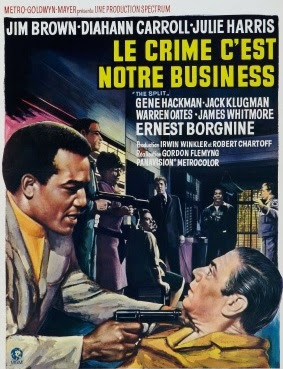
While political comedies usually spoil fast as sliced avocados, Ernst Lubitsch’s famous ‘Garbo Laughs’ vehicle, where her Russian ideologue thaws to romance in capitalist Paris, shows almost no sign of aging. If anything, the first half plays funnier, the second warmer & more touching than it has since its Pre-War first-run. Almost everyone in the film has never been better. Not only Greta Garbo, charming & relaxed in a manner she’d never attempted, but all the men who support her. Melvyn Douglas, with a high polished glamor hiding deficiencies perfectly suited to his well-dressed gigolo; the troika of incompetent Russian negotiators (straight men in the original draft till Lubitsch saw their comic & sentimental potential); and a devastatingly self-revealing turn from stage actress Ina Claire, who needs but a glance at her competition to know Garbo has her defeated in looks, youth & depth of feeling.* Even Bela Lugosi, in a small but telling bit as a Moscow apparatchik who sends a reluctant Garbo back to the West, is indelible yet human-scaled; a trick no one else ever brought off. Technically, Lubitsch had dropped his flashy early manner for candor, holding showy moments back as reserve. Yet look how carefully he sets up the big ‘Garbo Laughs’ moment with a five-minute two-shot (less one insert shot) of Garbo & Douglas at lunch. (Garbo never stops eating so it couldn’t have been more than one or two takes.) You expect these built-up moments to fall a little flat, especially on repeat viewings. Not here. The laughs are all real . . . and delightful; life enhancing. Nitpickers can point to the typically overlit M-G-M sets, all that chintz & finery on display. Yet somehow, at M-G-M, the least director-friendly of all major studios, Lubitsch had nothing but masterpieces: THE STUDENT PRINCE/’27; THE MERRY WIDOW/’34; NINOTCHKA; and THE SHOP AROUND THE CORNER/’40, which may be best of all.
ATTENTION MUST BE PAID: As prestige items, Garbo’s vehicles were usually saddled with the stultifying musical scores of Herbert Stothart. (His main theme in CAMILLE/’36 sounds like ‘Makin’ Whoopee!’ in half-time.) Lubitsch was having none of that and brought in a European emigre he’d found, Werner R. Heymann, for the film’s spritely score.
DOUBLE-BILL: *Ina Claire’s looks didn’t ‘take’ to camera, though here since she’s meant to be a bit past prime it’s no problem. She's at her considerable best in her last film before this, THE GREEKS HAD A WORD FOR THEM/’32 (one of those three girls hunting for Mister Right things). But her defining moment on screen is found in a single line of dialogue from George Cukor’s early success THE ROYAL FAMILY OF BROADWAY/’30. Playing a sort of Ethel Barrymore actress, the line (which is nothing on the page, yet too good to give away) has something to do with knitting and you’ll know it when you hear it. It’s enough to show why she starred in over 20 B’way productions, including BLUEBEARD’S EIGHTH WIFE which Lubitsch made just before NINOTCHKA with the same writers, Charles Brackett & Billy Wilder.































